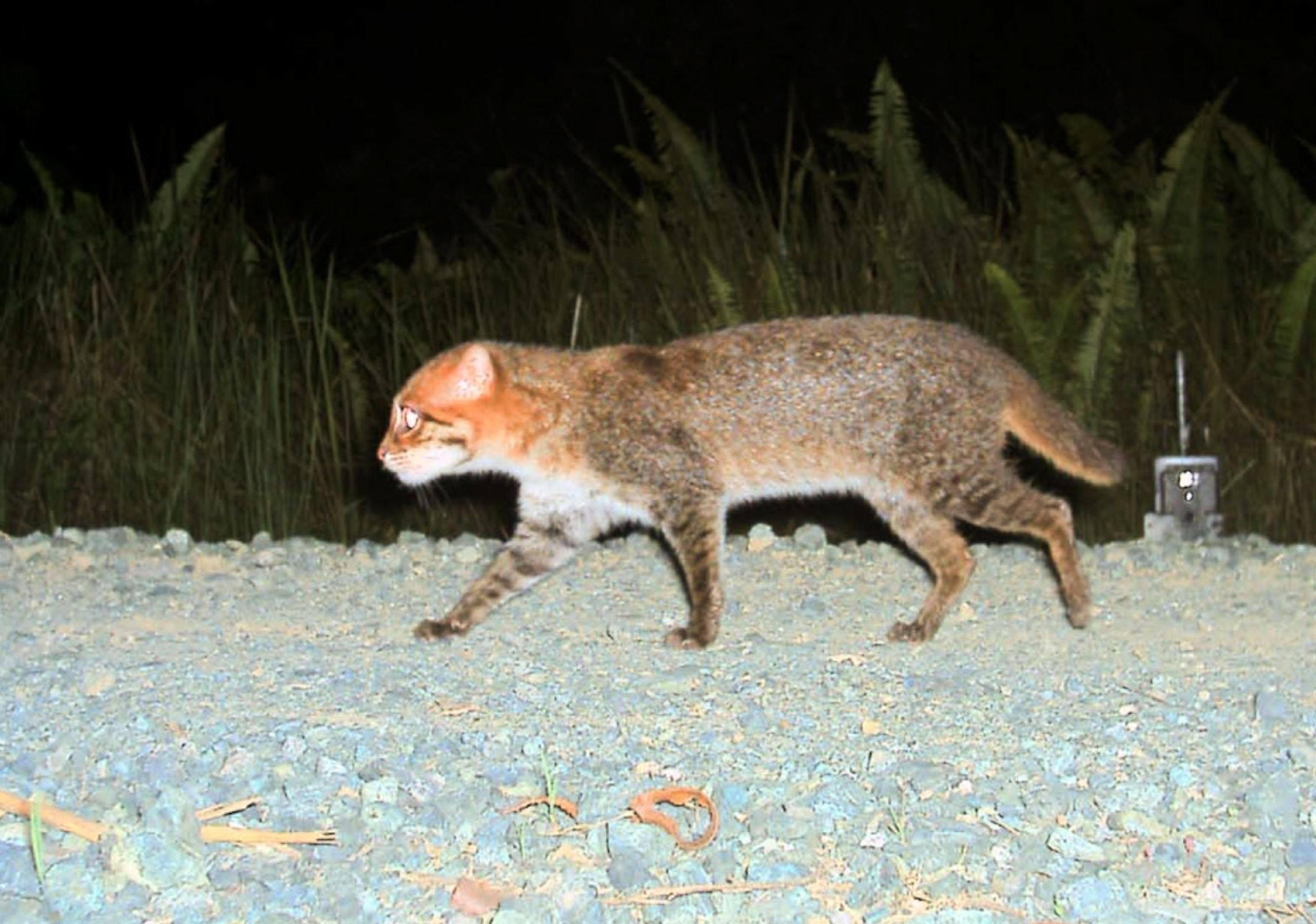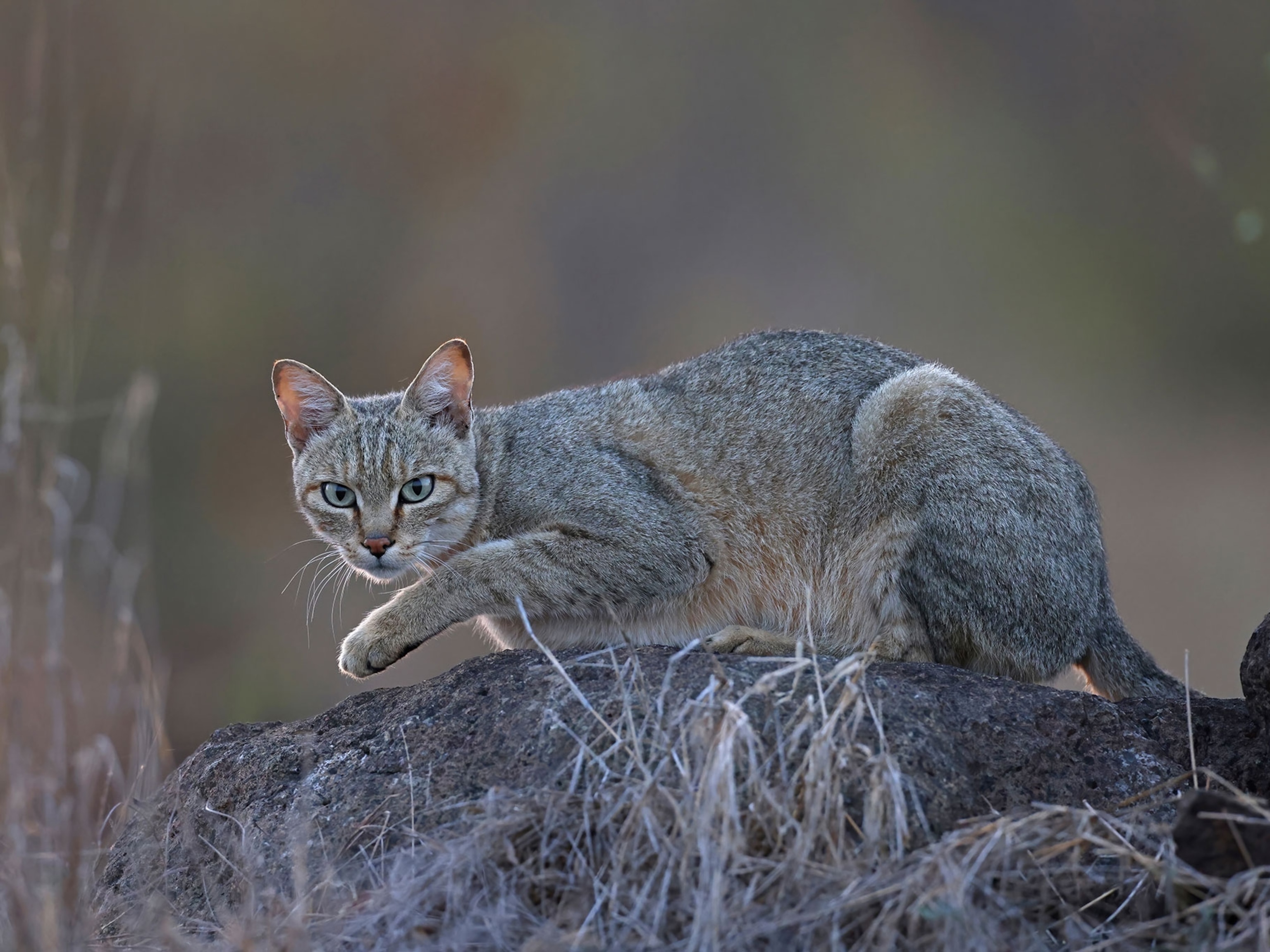
Flat-headed, Web-footed Swamp Cat Dying Out
Biofuel crops taking over rare cat's habitat, experts say.
You could say the rare flat-headed cat of Southeast Asia belongs in a category all its own: The feline has webbed feet, a strangely streamlined head, and it prefers swimming in swampy peat forests.
But the flat-headed cat's unusually aquatic lifestyle may also doom it: More than half of its lowland habitat is quickly becoming vast biofuel plantations, a new study says.
One of the least-studied felines, the 3.3-pound (1.5-kilogram) cat likely eats fish and crabs. Its streamlined head may provide speed in the water, although that's pure speculation, said study co-author Andreas Wilting of the Leibniz Institute for Zoo and Wildlife Research in Berlin, Germany.
To get a loose estimate of the elusive cat's population, Wilting and colleagues pieced together scattered records of flat-headed cat sightings since 1984.
Their findings jibe with a previous estimate by the International Union for Conservation of Nature, which found fewer than 2,500 breeding individuals of the nocturnal animal roaming rain forest pockets in Thailand, Malaysia, Brunei, and Indonesia (see regional map).
The team then combined the population estimate with climate records from the same time period to make a computer model that predicted where the cat once lived and where it likely lives now. The results revealed the biggest threats to the endangered species.
The new study suggests that the cat's numbers can only decrease as more of the region's swamps are drained to plant palms, which are grown for oil used in biofuel production.
Flat-Headed Cat Is "Sexy" Conservation Symbol
The new model helped the team identify 19 hot spots that need to be protected for the flat-headed cat to survive, said Wilting, whose study appeared March 17 in the journal PLoS ONE.
Most of the region's established protected areas sit at higher elevations, offering no haven for the lowland-dwelling species. The scientists were surprised to discover that the cat has never been sighted in upland rain forests, which suggests the species is entirely dependent on swamps and rivers for its food.
(Related pictures: "Seven Cat Species Found in One Forest—A Record.")
In coming months, the team will share their model and recommendations with government officials in Southeast Asia, Wilting added.
"It makes no sense to publish [in] scientific journals if we don't bring the details to the people who can implement things on the ground," Wilting said.
The researchers also hope their work will help get the flat-headed cat appointed as a symbol of the threatened Southeast Asian ecosystem the species calls home.
"As cats are very sexy, [we could] put this on the flag and say, We need to do something about lowland forests."





